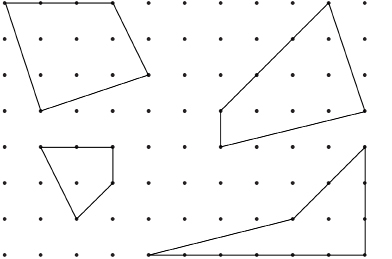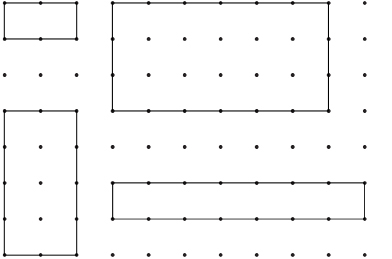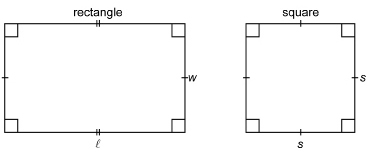Module 4
1. Module 4
1.7. Page 2
Module 4: Area
Get Started
In the following Try This activity you will review the area formulas for a parallelogram and a triangle. When you are finished, put your responses to the questions in your course folder.
 Try This
Try This
Print at least four copies of Quarter-Inch Grid. You will need these sheets for this activity and for the activities in Explore.
Quad means “four.” Lateral means “side.”
In your work in previous lessons, you explored finding areas of rectangles and squares. Rectangles and squares are examples of a much larger group of four-sided shapes. Polygons with four sides are known as quadrilaterals.
Following are some sample quadrilaterals.

 Self-Check
Self-Check
SC 1. Look at this sample of rectangles.

There are two aspects that make rectangles special amongst all quadrilaterals. Can you identify these aspects from looking at the sample rectangles?
Often when rectangles are sketched, hatch marks are used to indicate the sides that have equal length. The small squares shown in the diagram of a rectangle and a square also have a special meaning. They tell you that these corners are right angles.

There are lots of other special quadrilaterals. A parallelogram is the one you will be looking at next. Like a rectangle, a parallelogram’s opposite sides have equal length and are parallel. The difference is that the angles are not all right angles.